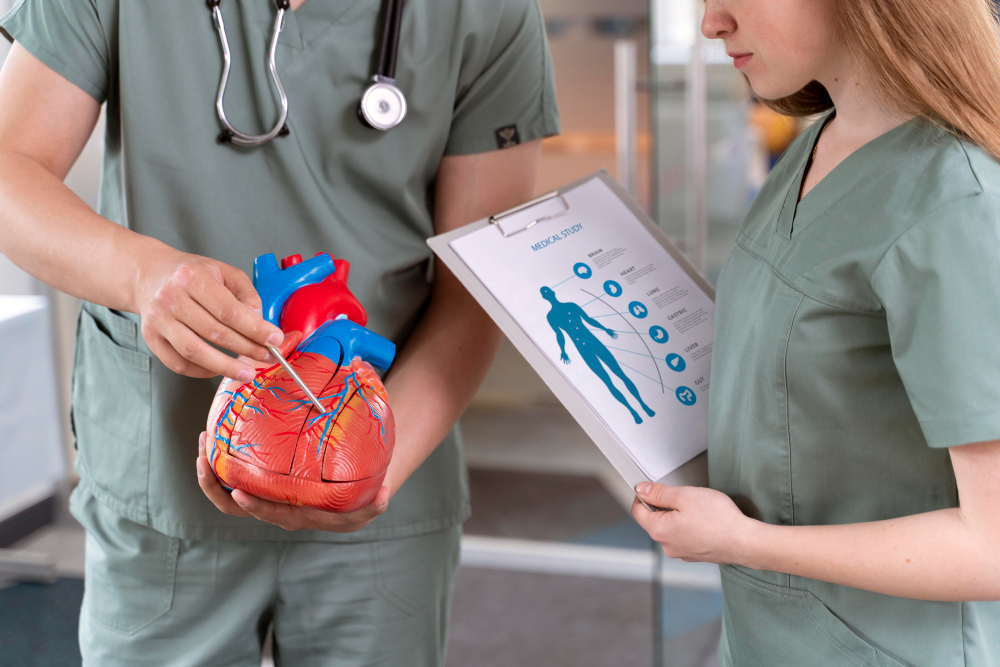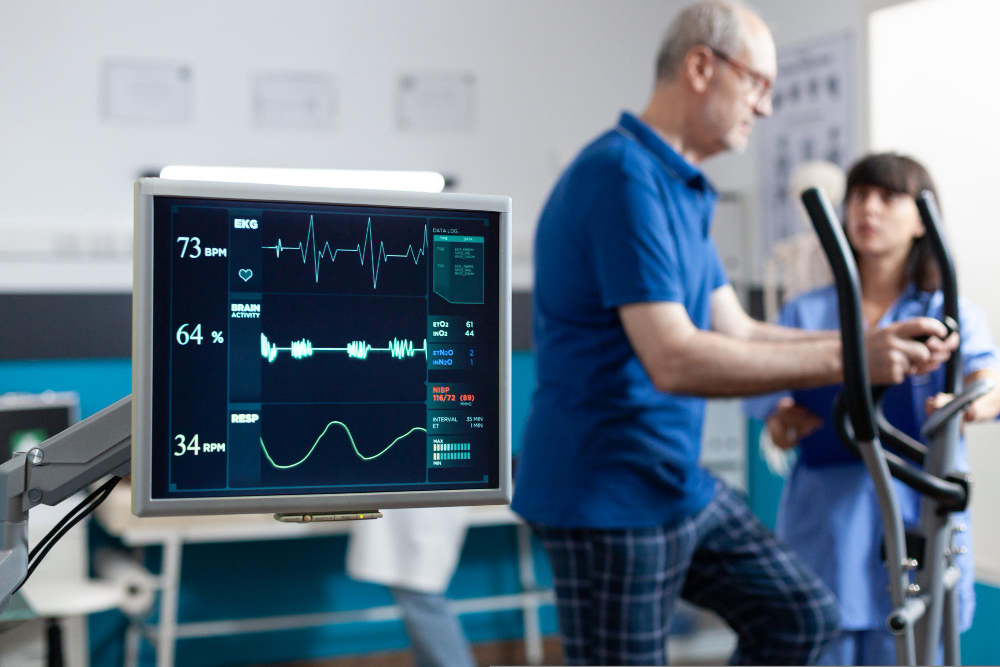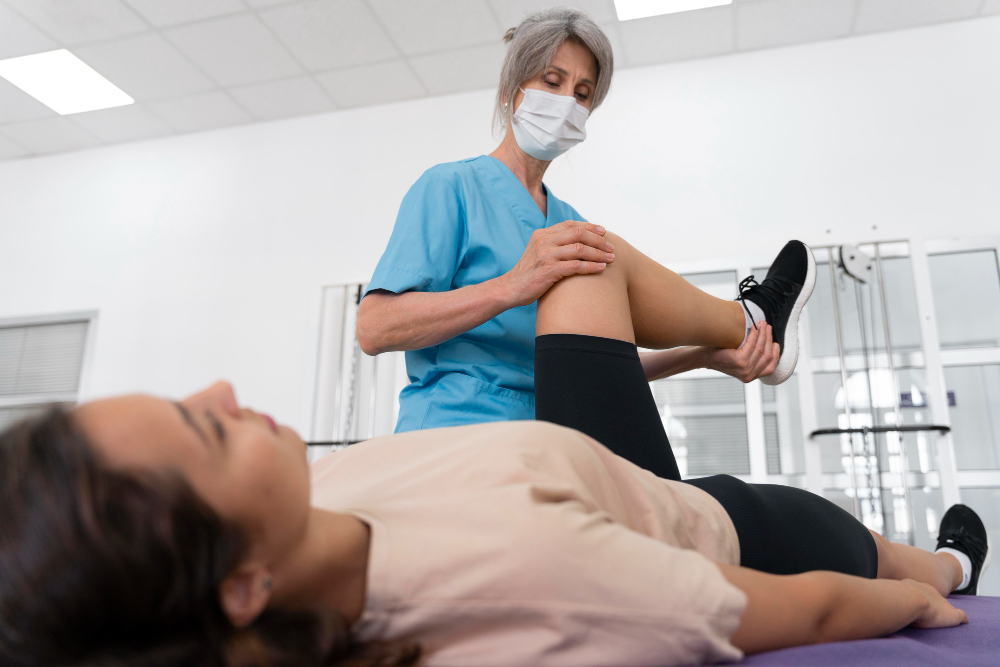Cardiac Rehab
Cardiac rehabilitation enhances the strength of your heart. It can initiate by taking a stroll along the hospital corridor and advance to regular sessions on a stationary bicycle. However, physical activity constitutes only a segment of a comprehensive cardiac rehabilitation plan. This plan also encompasses stress alleviation, guidance on nutrition, and assistance in managing any ongoing health issues.

What is Cardiac Rehab?
Cardiac rehabilitation is a crucial program designed for individuals in the process of recovering from a heart attack, heart failure, or other heart condition that necessitated surgical intervention or medical treatment.
Cardiac Rehab is a closely monitored program comprising of:
- Physical activity.
- Education pertaining to maintaining a healthy lifestyle, encompassing topics such as adopting healthy eating habits, adhering to prescribed medication, and quitting smoking.
- Seeking guidance to discover methods of reducing stress and enhancing one’s mental well-being.
Various individuals can assist you during your cardiac rehabilitation, including your healthcare professionals, experts in exercise and nutrition, physical therapists, and counselors.
Is cardiac rehab for you?
If you have experienced any of the following conditions, it is advisable for you to undergo cardiac rehabilitation.
- Coronary heart disease
- A heart attack or being admitted for angina
- A cardiac arrest
- Heart transplant
- Heart failure and cardiomyopathy
- is a procedure where a medical device, such as a pacemaker or defibrillator, is implanted into the body.
- An event (stent, PCI, CAGS).
- In cases of abnormal heart rhythms, such as atrial fibrillation, that originate within the heart.
- Pulmonary hypertension, also known as high blood pressure in the lungs, is a medical condition.
- A stent procedure is a type of surgery for the heart, such as bypass surgery, valve surgery, or artery surgery.
- A stroke or mini stroke (TIA)

Goals of Cardiac Rehab
A comprehensive cardiac rehabilitation program needs to include certain essential elements.
Cardiac rehabilitation programs must prioritize the improvement of cardiovascular risk factors, minimizing disability, promoting the adoption of an active and healthy lifestyle, and assisting in the preservation of these positive habits once the rehabilitation process is finished.
- Assessment of patients’ nutritional needs and provision of counseling on dietary choices and habits.
- Weight management
- Blood pressure management
- Lipid management
- Diabetes management
- Tobacco cessation
- Psychosocial management
- Physical activity counseling
- Exercise training
What does cardiac rehab involve?
Cardiac rehabilitation has the ability to enhance the future condition of your heart, even though it cannot alter your past.
Cardiac rehabilitation is a doctor-monitored program aimed at enhancing your heart health after experiencing a heart attack, heart failure, angioplasty, or heart surgery. It consists of three essential components that hold equal significance.
- Exercise counseling and training involve teaching individuals how to engage in physical activities that stimulate the heart and improve the overall functioning of their cardiovascular system. This instruction helps individuals understand how to effectively move their bodies to enhance heart health.
- One important aspect of cardiac rehabilitation is gaining knowledge about living a heart-healthy lifestyle. This includes understanding how to effectively handle risk factors, quit smoking, and make nutritious choices for your heart.
- Counseling for stress reduction aims to address and manage the various sources of stress that can negatively impact your heart. This component of cardiac rehabilitation assists in recognizing and effectively dealing with daily stressors.

What happens during cardiac rehab?
The cardiac rehab team will oversee your exercise in a group setting and guide you to begin with a slow pace as instructed by them.
As you continue with additional sessions, you will develop more self-assurance and stamina. Over time, you will progressively raise the level of difficulty and/or length of your workout based on your fitness level and medical background. The cardiac rehabilitation team will regularly monitor your heart rate and blood pressure to ensure your safety during exercise.
How Long Will I Be in a Rehab Program?
The response varies based on your particular health condition.
A typical program’s duration is 12 weeks, during which you will attend a rehab facility for about an hour or two, two or three times each week. After completing this program, you and your team will make a collective decision on whether you should proceed further.
If you still don’t feel well or are unable to figure out how to go to a rehabilitation center, it might be feasible to receive care or treatment at home or through online means.
Cardiac rehabilitation can be advantageous for individuals who maintain a regular exercise routine and consume nutritious meals, even if they may only require a short-term program.
After completing outpatient rehabilitation, make sure to keep up with regular exercise, maintain a healthy diet, adhere to your prescribed medication routine, and apply all the knowledge and skills you have acquired from the lessons.
How does cardiac rehabilitation help?
Engaging in cardiac rehabilitation can offer numerous health advantages, both in the immediate and long run, which may comprise:
- Rebuilding your heart and physical health following a cardiac event.
- Alleviating signs of heart issues, like discomfort in the chest.
- Developing better routines like engaging in increased physical activity, discontinuing smoking, and adopting a diet beneficial for cardiovascular health. A nutritionist or dietitian might collaborate with you to support the reduction of consumption of foods containing unhealthy fats and facilitate the consumption of fruits and vegetables rich in essential vitamins, minerals, and fiber.
- Reducing stress.
- Boosting your emotional state. Individuals may experience feelings of sadness and despair following a cardiac event. Engaging in cardiac rehabilitation programs can play a crucial role in averting or minimizing the effects of depression.
- Improving your energy and stamina to enhance your ability to perform everyday tasks such as carrying bags of groceries and scaling stairs with greater ease.
- Increasing the chances of you adhering to the prescribed medications that aid in reducing your chances of experiencing future heart issues.
- Reducing upcoming instances of sickness and mortality caused by heart disease is achievable. Research has revealed that engaging in cardiac rehabilitation can significantly decrease the likelihood of death within the five years following a heart attack or bypass surgery, with a reduction rate of approximately 35%.
Treatment in Türkiye:
The medical staff of surgical teams, doctors, and consultants at REHABTÜRK can provide the best treatment options and free consultations, striving to stay up-to-date on the latest medical technologies and methods.
